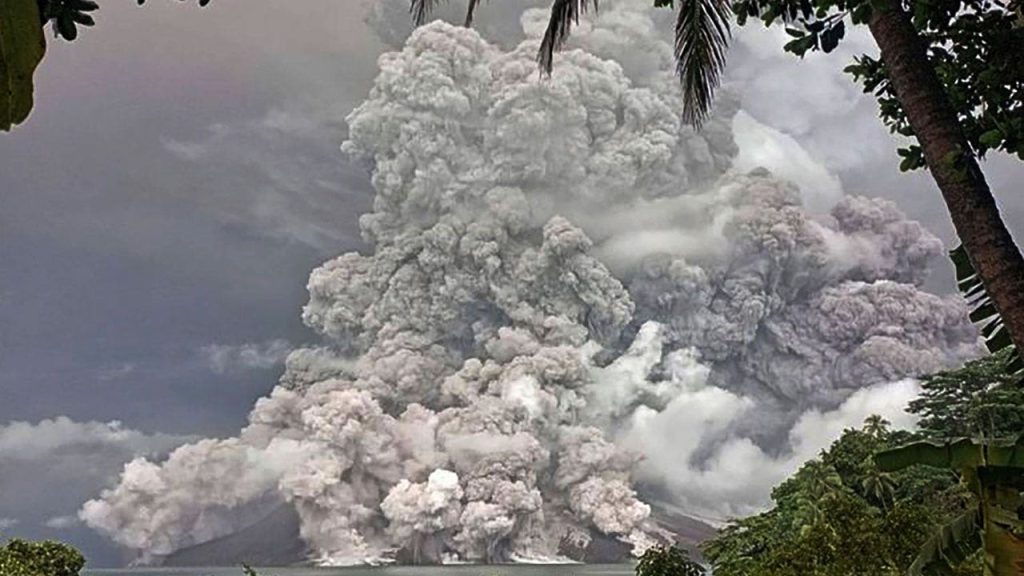Mount Ruang volcano in Indonesia erupted again on Wednesday, closing schools and airports, and causing hundreds of people to flee. This was the second eruption in two weeks on Ruang Island, part of the Sitaro islands chain. Seven airports, including the one in Manado, remained closed as the volcano continued to spew hot clouds of ash. The Indonesian geological agency advised people to stay at least 4 miles from the volcano’s crater, warning of possible super-heated volcanic clouds and a potential tsunami if the volcanic dome collapses into the sea. Evacuations were underway, with villagers from Tagulandang Island being taken to safety on a navy ship.
Following the eruption, which darkened the sky and showered several villages with ash, grit, and rocks, no casualties were reported. However, authorities had previously warned that a subsequent eruption could potentially cause part of the volcano to collapse into the sea. Mount Ruang is just one of around 130 active volcanoes in Indonesia, a country located on the Pacific “Ring of Fire,” known for its geological activity which includes volcanic eruptions and earthquakes. The archipelagic nation’s location on fault lines stretching from the Americas through Japan and Southeast Asia makes it prone to such natural disasters.
The volcanic eruptions on Mount Ruang have resulted in the closure of schools in the region, with the aim of protecting children from the volcanic ash. The eruption on Tuesday prompted evacuations and the deployment of rescue agencies to assist the affected populations. Video footage released by the National Search and Rescue Agency showed villagers being evacuated from Tagulandang Island, with hundreds more awaiting evacuation at local ports. The agency announced plans to move 11,000 to 12,000 people living within a 4-mile danger zone to government shelters to ensure their safety.
The situation on Mount Ruang is ongoing, with the volcano continuing to spew hot clouds of ash and pose potential risks to nearby islands. The Indonesian geological agency is closely monitoring the volcano for any signs of further activity that could endanger communities in the surrounding areas. The impact of the eruptions on local residents, including the disruption to daily life, evacuation efforts, and the closure of airports, highlights the need for preparedness and resilience in the face of natural disasters. As Indonesia grapples with the challenges posed by its active volcanic and seismic environment, it remains essential to prioritize the safety and well-being of those living in high-risk areas.
As the people of Indonesia face the ongoing volcanic activity on Mount Ruang, the authorities are issuing regular updates and guidance to ensure the population’s safety. The eruptions serve as a reminder of the country’s vulnerability to geological hazards and the importance of preparedness and response measures. Efforts to support affected communities and mitigate the impact of natural disasters are crucial in safeguarding lives and livelihoods in the face of such challenges. The resilience and solidarity of the Indonesian people, along with the dedicated work of rescue agencies and emergency responders, are key in navigating the complexities of managing volcanic eruptions and other geological events in the region.













